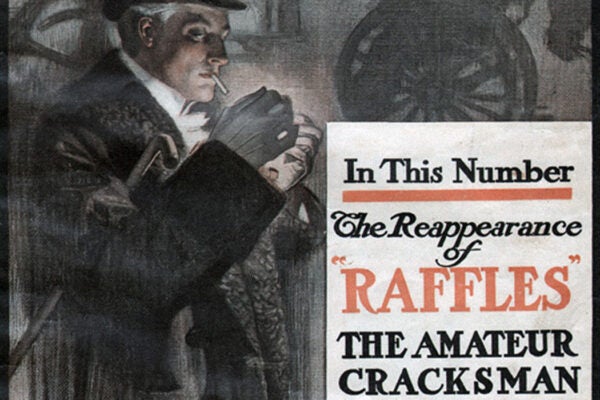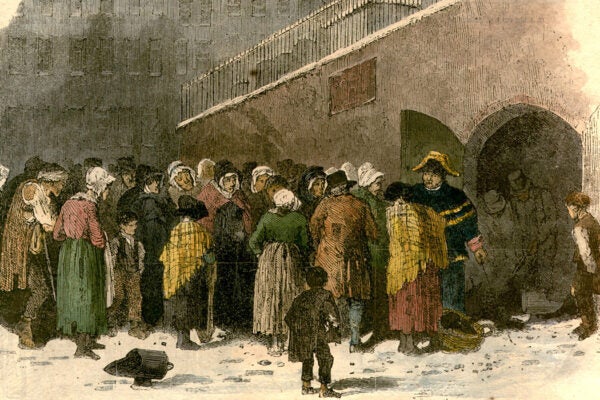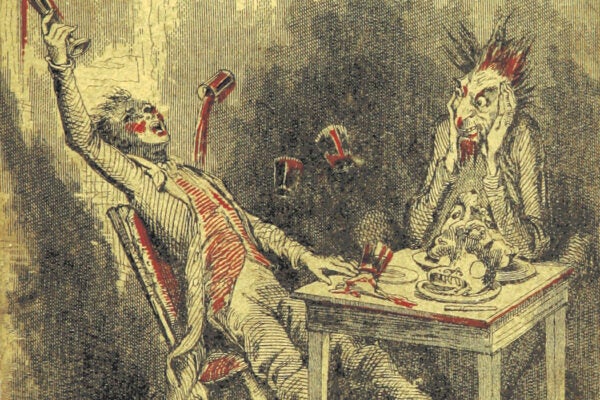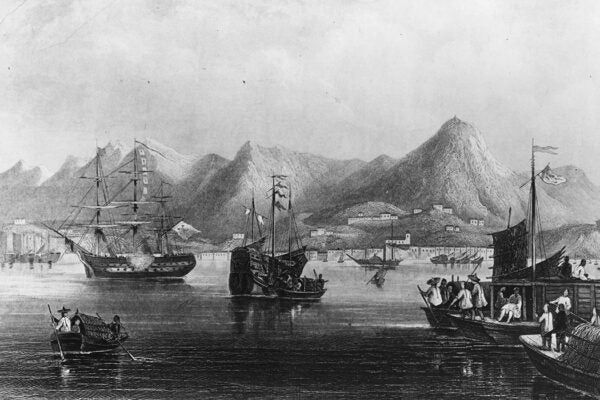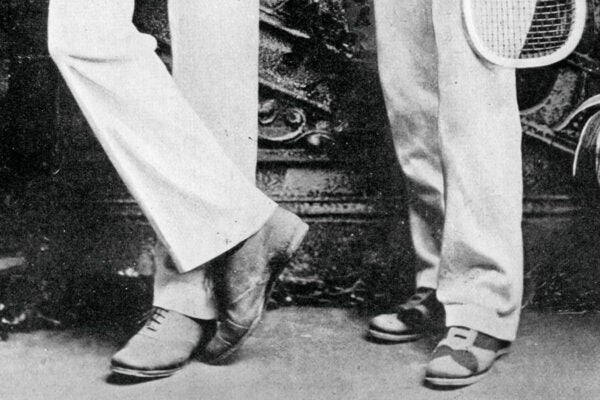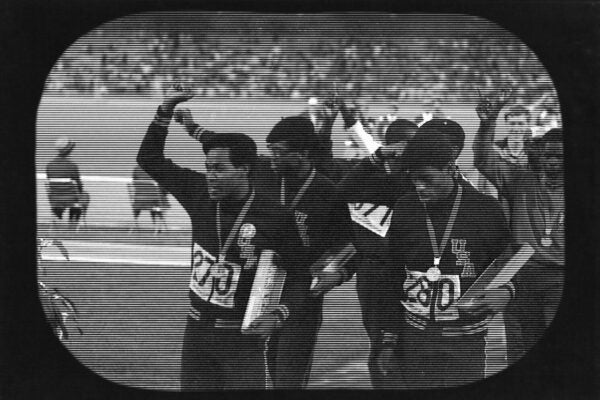Is “Swatting” Rooted in a Prank Craze from the 1800s?
Why did Georgian-era England go mad for dangerous hoaxes, and what can that mania tell us about today’s volatile, content-hungry world?
The Love Letter Generator That Foretold ChatGPT
Alan Turing and Christopher Strachey created a ground-breaking computer program that allowed them to express affection vicariously when so doing publicly, as gay men, was criminal.
The Joy of Burglary
In the early 1900s, a fictional “gentleman burglar” named Raffles fascinated British readers, reflecting popular ideas about crime, class, and justice.
But Why a Penguin?
Penguin Books built on an already strong tradition of branding through cute mascot “media stars” when they introduced their cartoon bird in 1935.
Banning Christmas Dinner
Poor laws passed in Great Britain in the 1830s reversed a centuries-old tradition to forbid workhouses from serving roast beef and plum pudding at Christmas.
Class and Superstition in Britain
Believing in ghosts wasn’t a class marker until the 1820s, when suddenly the educated classes tried to convince the masses that these apparitions were delusions.
How Sailors Brought the World Home
In the seventeenth and eighteenth centuries, sailors gained a knowledge of the world and access to exotic goods unlike anything other non-elites could imagine.
What Was It like to Be an Inuit in London in 1772?
London had long been described as wearying and unreadable, so it's not surprising that Inuit visitors considered it unfathomable and irrational as well.
The Dawn of Kicks
Invented for a faddish game in the 1880s, tennis shoes became fashionable when manufacturers, fearing the tennis boom would go bust, pushed them off the lawn.
Black Power on British TV
International television coverage of the American Civil Rights struggle was critical in the construction of racial identity and experience in postwar Britain.


